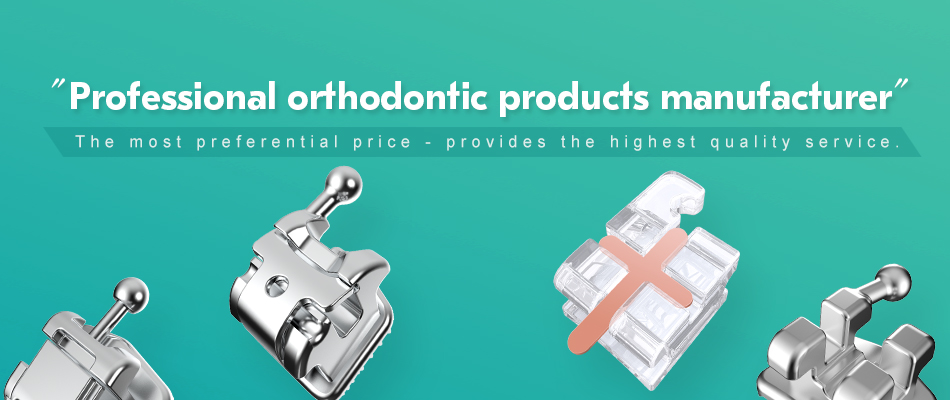Corrosion in orthodontic brackets reduces treatment effectiveness. It also negatively impacts patient well-being. Advanced coating solutions offer a transformative approach. These coatings mitigate these issues. They protect devices like Orthodontic Self Ligating Brackets, ensuring safer and more reliable treatment outcomes.
Key Takeaways
- Advanced coatings protect orthodontic brackets. They stop corrosion and make treatment better.
- Different coatings like metal, polymer, and ceramic offer special benefits. They make brackets stronger and safer.
- New technologies like self-healing coatings are coming. They will make orthodontic treatment even more effective.
Why Orthodontic Brackets Corrode in the Mouth
The Aggressive Oral Environment
The mouth presents a harsh environment for orthodontic brackets. Saliva contains various ions and proteins. These substances constantly interact with bracket materials. Temperature fluctuations occur frequently. Patients consume hot and cold foods and drinks. These changes stress the metal. Different foods and beverages also introduce acids. These acids can attack the bracket surface. Bacteria in the mouth form biofilms. These biofilms create localized acidic conditions. All these factors combine to promote corrosion.
Consequences of Bracket Material Degradation
Bracket material degradation leads to several problems. Corroding brackets release metal ions into the mouth. These ions can cause allergic reactions in some patients. They may also affect surrounding tissues. Corrosion weakens the bracket structure. A weakened bracket can break or deform. This compromises treatment effectiveness. It can extend treatment time. Corroded brackets also look unsightly. They can stain teeth or appear discolored. This impacts patient aesthetics and satisfaction.
How Fluoride Impacts Corrosion
Fluoride plays a complex role in bracket corrosion. Dentists often recommend fluoride for cavity prevention. Fluoride strengthens tooth enamel. However, fluoride can sometimes influence bracket materials. High concentrations of fluoride might increase the corrosion rate of certain alloys. This happens through specific chemical reactions. Researchers study these interactions carefully. They aim to develop materials that resist fluoride-induced corrosion. This ensures both tooth protection and bracket integrity.
Enhancing Durability with Metal-Based Coatings
Metal-based coatings offer a powerful solution for improving orthodontic bracket durability. These thin layers protect the underlying bracket material. They increase resistance to wear and corrosion. This section explores some popular metal-based coatings.
Titanium Nitride (TiN) Applications
Titanium Nitride (TiN) is a very hard ceramic material. It often appears as a thin, gold-colored coating. Manufacturers apply TiN to many tools and medical devices. This coating significantly increases surface hardness. It also improves wear resistance. For orthodontic brackets, TiN creates a protective barrier. This barrier shields the metal from corrosive elements in the mouth.
TiN coatings reduce friction between the archwire and the bracket slot. This can help teeth move more smoothly. Patients may experience shorter treatment times.
TiN also shows good biocompatibility. This means it does not harm living tissues. It minimizes allergic reactions. Its smooth surface resists bacterial adhesion. This helps maintain better oral hygiene around the bracket.
Zirconium Nitride (ZrN) for Corrosion Protection
Zirconium Nitride (ZrN) is another excellent choice for bracket coatings. It shares many benefits with TiN. ZrN also provides high hardness and wear resistance. Its color is typically a light yellow or bronze. This coating offers superior corrosion protection. It forms a stable layer that resists acids and other harsh chemicals.
Researchers find ZrN particularly effective in the oral environment. It withstands the constant exposure to saliva and food acids. This prevents the release of metal ions from the bracket. Reduced ion release means fewer potential allergic reactions. It also maintains the bracket’s structural integrity over time. ZrN coatings contribute to a more stable and reliable orthodontic treatment.
Diamond-Like Carbon (DLC) Benefits
Diamond-Like Carbon (DLC) coatings are unique. They possess properties similar to natural diamond. These properties include extreme hardness and low friction. DLC coatings are very thin. They are also highly resistant to wear and corrosion. Their black or dark gray appearance can also offer an aesthetic benefit.
DLC coatings create an incredibly smooth surface. This smoothness reduces friction between the bracket and the archwire. Lower friction allows for more efficient tooth movement. It can also decrease patient discomfort. Furthermore, DLC coatings are highly biocompatible. They do not cause adverse reactions in the mouth. Their inert nature prevents metal ion release. This makes them an excellent choice for patients with metal sensitivities. DLC also resists bacterial colonization. This helps keep the bracket surface cleaner.
Polymer Coatings for Biocompatibility and Flexibility
Polymer coatings offer unique advantages for orthodontic brackets. They provide excellent biocompatibility. They also offer flexibility. These coatings protect the underlying metal. They also interact favorably with oral tissues.
Polytetrafluoroethylene (PTFE) in Orthodontics
Polytetrafluoroethylene (PTFE) is a well-known polymer. Many people know it as Teflon. PTFE has exceptional properties. It has a very low friction coefficient. It is also chemically inert. This means it does not react with many substances. PTFE is highly biocompatible. It does not cause adverse reactions in the body.
Manufacturers apply PTFE as a thin layer on orthodontic brackets. This coating reduces friction between the archwire and the bracket slot. Lower friction allows teeth to move more smoothly. This can shorten treatment times. PTFE’s non-stick surface also helps. It resists plaque buildup. It also makes cleaning easier for patients. The coating protects the bracket material from corrosion. It forms a barrier against acids and enzymes in the mouth.
Post time: Oct-24-2025


